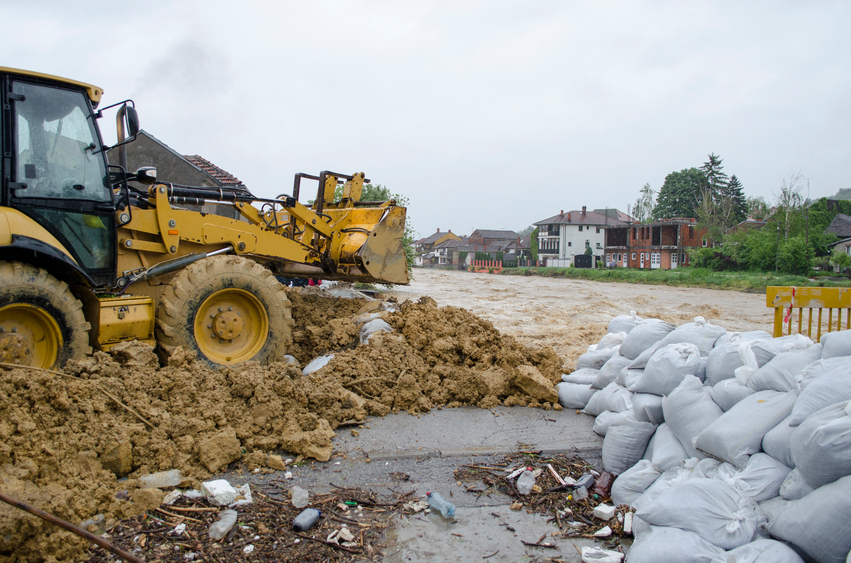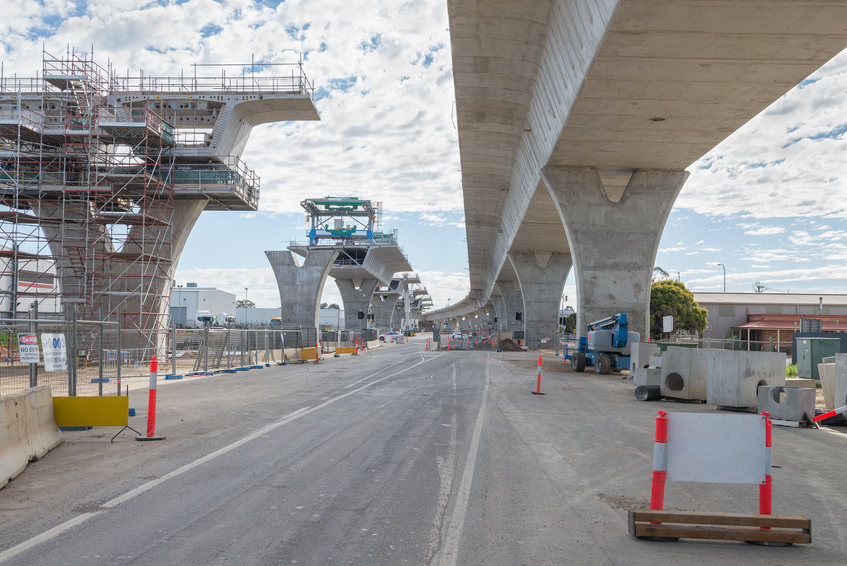New York Structural and Ethics 18 PDH Discount Package 3
Courses in this Package
Design and Construction Guidance for Breakaway Walls (S03-021)
Protocols for the Assessment and Repair of Bridge Foundations (S08-006)
Strength Design For Reinforced Concrete Hydraulic Structures (S03-022)
Determining the Cost/Benefit of Routine Maintenance Cleaning on Steel Bridges (S03-024)
Ethics, Professionalism and Disciplinary Actions: Case Studies (LE1-003)

This engineering online PDH course provides guidance on designing and constructing breakaway walls below elevated buildings located in coastal high hazard areas in accordance with the National Flood Insurance Program (NFIP).
Obstructions below an elevated building can significantly increase the potential for flood damage by increasing the surface area subject to wave impact and velocity flow. As such, NFIP regulations require that the area below the lowest floor of elevated buildings either be free of obstructions or have any enclosed areas be constructed of non-supporting breakaway walls, open lattice-work, or insect screening. The walls, lattice, or screening are intended to collapse under wave loads without causing collapse, displacement, or other structural damage to the elevated building or the supporting foundation system.
This 3 PDH online course is intended for structural and geotechnical engineers, as well as design and construction personnel involved in coastal design and construction projects.
This PE continuing education course is intended to provide you with the following specific knowledge and skills:
- Understanding NFIP regulations concerning breakaway walls
- Learning about Flood Insurance Considerations affecting rates and costs of NFIP flood insurance for elevated buildings
- Knowing the Performance of Breakaway Walls
- Understanding the function of breakaway walls as well as their impact on other building elements
- Learning about the three different design methods for breakaway walls
Upon successful completion of the quiz, print your Certificate of Completion instantly. (Note: if you are paying by check or money order, you will be able to print it after we receive your payment.) For your convenience, we will also email it to you. Please note that you can log in to your account at any time to access and print your Certificate of Completion.

This online engineering PDH course provides information on protocols for the assessment and repair of bridge foundations.
This course is intended to provide guidance to bridge owners for preparing for and responding to bridge foundation failures. The word “failure” as used herein includes foundation movements and/or corrosion beyond the design norms for the structure that result in the need to close a bridge or portion thereof for any period of time. The movements and/or corrosion may or may not cause the bridge to be unsafe but are considered significant enough to close the bridge.
This course describes case histories of recent bridge foundation failures. It also provides guidance on preparing for foundation events by collecting records, establishing response teams and developing notification and communication protocols. Once an event has occurred, the course provides guidance for response including closing the bridge to traffic, notifying government and private parties, stabilizing the bridge site, investigative and monitoring techniques, repair and retrofit techniques. The course includes a check list intended to assist bridge in preparing for an incident and for developing a response once an incident has occurred.
This 8 PDH online course is applicable to structural engineers and other professionals who are interested in learning more about the assessment and repair of bridge foundations.
This PE continuing education course is intended to provide you with the following specific knowledge and skills:
- Familiarizing with repair and retrofit techniques utilized in the restoration of bridge foundations, ensuring the successful rehabilitation of the structure
- Learning about effective response procedures following a bridge foundation failure, such as closing the bridge to traffic, notifying relevant government and private parties, stabilizing the bridge site, and implementing investigative and monitoring techniques
- Understanding the definition and scope of bridge foundation failures, encompassing movements and/or corrosion that exceed design norms and necessitate bridge closures
- Learning about practical guidance for preparing for foundation events, including the collection of relevant records, establishment of response teams, and development of notification and communication protocols
- Knowing strategies and techniques to restore the load carrying capacity of failed bridge foundations, enabling the bridge to be put back into service
Upon successful completion of the quiz, print your Certificate of Completion instantly. (Note: if you are paying by check or money order, you will be able to print it after we receive your payment.) For your convenience, we will also email it to you. Please note that you can log in to your account at any time to access and print your Certificate of Completion.

This online engineering PDH course describes typical loads for the design of reinforced concrete hydraulic structures (RCHS) and provides detailed information on design procedures along with examples of their application.
Reinforced concrete hydraulic structures have very long service lives and are subject to different types of loads, severe climatic conditions and sometimes to chemically contaminated atmosphere. To ensure a satisfactory long term service and to provide a safe, reliable and cost effective hydraulic structures, industry design and construction standards should be adopted.
Satisfactory long-term service requires that the saturated concrete be highly resistant to deterioration due to daily or seasonal weather cycles and tidal fluctuations at coastal sites. The often relatively massive members of RCHS must have adequate density and impermeability, and must sustain minimal cracking for control of leakage and for control of corrosion of the reinforcement. Most RCHS are lightly reinforced structures (reinforcement ratios less than 1%) composed of thick walls and slabs that have limited ductility compared to the fully ductile behavior of reinforced concrete buildings (in which reinforcement ratios are typically 1% or greater).
This 3 PDH online course is applicable to civil and structural engineers who are interested in learning more about reinforced concrete hydraulic structures, its detailed design considerations and applications.
This PE continuing education course is intended to provide you with the following specific knowledge and skills:
- Familiarizing with the details of reinforcement in various members of hydraulic structures
- Familiarizing with the different designs of RCHS and examples of their applications
- Learning about members that are subjected to shear load effects
- Understanding the effect of combined flexural and axials loads on design parameters
- Knowing the strength and serviceability requirements of different structures
Upon successful completion of the quiz, print your Certificate of Completion instantly. (Note: if you are paying by check or money order, you will be able to print it after we receive your payment.) For your convenience, we will also email it to you. Please note that you can log in to your account at any time to access and print your Certificate of Completion.

This online engineering PDH course aims at identifying the key variables necessary in estimating the impact of regular washing of steel bridges on the paint and service life, recommending methods for recording data in order to most effectively estimate the benefits of bridge washing, and developing a framework to assess the impact of bridge washing on paint life.
Thirty years ago, when the environmental rules changed, the WSDOT stopped annual cleaning of steel truss bridges. Some cleaning was done after this time only to assist inspection crews or to determine what the cost would be to hand clean a steel truss bridge. WSDOT is investigating the feasibility of an annual steel truss bridge washing program. A pilot study was implemented in 2011 that will help to determine the benefits and environmental impacts of such a program.
This work builds on the pilot study to identify current bridge washing practices around the country and to select the measurements necessary to determine whether more regular washing has positive cost benefits. The research summarized in this course is a first step towards understanding and quantifying the benefits of a more regular bridge washing program on paint life and corrosion.
This 3 PDH online course is applicable to civil and structural engineers who are interested in assessing the impact of bridge washing on paint and service life, estimating the benefits of bridge washing, and improving the maintenance of steel bridges.
This PE continuing education course is intended to provide you with the following specific knowledge and skills:
- Familiarizing with the pilot bridge washing program, the conducted studies and the yielded results
- Gaining a general overview on the research and literature review concerning bridge maintenance
- Learning about the nationwide survey on bridge washing programs, and the responses in different States
- Exploring the bridge washing programs in different States including Iowa, Alaska, Kentucky, New York, New Hampshire, Missouri, Indiana
- Identifying the impact of regular bridge washing programs on paint life and corrosion
Upon successful completion of the quiz, print your Certificate of Completion instantly. (Note: if you are paying by check or money order, you will be able to print it after we receive your payment.) For your convenience, we will also email it to you. Please note that you can log in to your account at any time to access and print your Certificate of Completion.

In this online engineering PDH course, ten case studies of actual enforcement actions taken by a state licensing board are presented. The cases have been selected to be representative of situations likely to exist in many states. Board procedures and the types of enforcement actions available are shown by a variety of cases ranging from a geotechnical engineer who produced (within one hour and without visiting the site) a soils report, to an engineer who was unable to document his PDH's during a board audit. The importance of being very careful about when to put "P.E." after one's name on a document also will become apparent.
Codes of ethics for engineers typically describe standards for professional behavior. The enforcement of those ethical standards that are inscribed into law lies with the licensing boards of state governments.
This 1 PDH online course is intended primarily for all engineers seeking to deepen their understanding of what constitutes ethical and professional engineering behavior and how such behavior is enforced by the licensing board.
This PE continuing education course is intended to provide you with the following specific knowledge and skills:
-
Familiarizing with the format of enforcement decrees issued by a state licensing board
-
Knowing the ten different types of licensing violations
-
Understanding the investigative process of the board, as it attempts to determine the validity of complaints brought before it
-
Learning about the types of enforcement actions available to the board
In this professional engineering CEU course, you need to review the course document titled, "Ethics, Professionalism and Disciplinary Actions: Case Studies".
Upon successful completion of the quiz, print your Certificate of Completion instantly. (Note: if you are paying by check or money order, you will be able to print it after we receive your payment.) For your convenience, we will also email it to you. Please note that you can log in to your account at any time to access and print your Certificate of Completion.